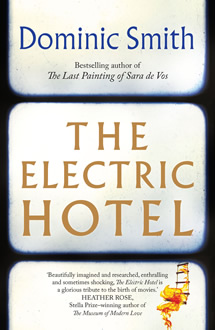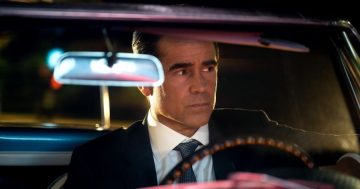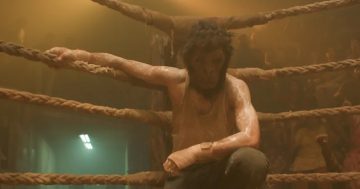Reviewed by Robert Goodman.
By Dominic Smith, Allen and Unwin, $32.99
 Dominic Smith’s debut novel The Mercury Visions of Louis Daguerre reimagined the life of the inventor of photography. In The Electric Hotel he goes to the next step – beginning with the Lumiére brothers and the very early days of cinema, he charts the early growth of the silent film industry. Given that we have recently seen another movie break global cinematic records, it is fascinating to consider where our obsession with the silver screen began and the seeds of the modern film industry.
Dominic Smith’s debut novel The Mercury Visions of Louis Daguerre reimagined the life of the inventor of photography. In The Electric Hotel he goes to the next step – beginning with the Lumiére brothers and the very early days of cinema, he charts the early growth of the silent film industry. Given that we have recently seen another movie break global cinematic records, it is fascinating to consider where our obsession with the silver screen began and the seeds of the modern film industry.
Smith uses flashback as a framing for his story. In 1962, ageing Claude Ballard is living in a rundown hotel in Los Angeles. He receives a visit from Martin Embry, a film history student who wants to talk to him about his early years and the birth of silent film. In doing so, he finds that Ballard has what may be the last remaining copy of his final masterpiece, a silent film called The Electric Hotel. The story that follows is the story of that film, the events that led to its creation and the aftermath of its release. The tale moves from Ballard’s early days working for the Lumiéres, demonstrating the power of this new technology to an amazed public in America and Australia, through to the development of a nascent film industry in New Jersey and the creation of what might have been the first full length motion picture, before Thomas Edison’s aggressive legal tactics destroyed that industry and forced film makers to move out to Los Angeles.
Smith’s last novel, The Last Painting of Sara De Vos also concerned itself with art and its creation. That story used past and present to create a narrative resonance across centuries. Structurally, The Electric Hotel is more standard historical fiction. With brief breaks to return to the framing story of the 1960s, the tale unspools in a linear fashion. While there is plenty of historical detail to chew on, it is the characters that bring this story alive – from the film obsessed cinematographer Ballard, to his French muse and star Sabine Montrose, Australian stunt man Chip Spalding and their friend and impresario Hal Bender. Their characters stand in for all of those who worked in the very early days of film, a heady time during which forty five second views became ten minute reels, became fifteen minute episodes complete with literal cliffhangers, which became feature length films.
As in his previous novel, Smith manages to effortlessly immerse readers in the various time periods, be it New York at the turn of the century, the Western Front in the early years of World War I or Los Angeles in the early 1960s. For Australian readers there is also a brief trip early on to the aquarium and fun fair at Tamarama Beach where Ballard is sent to show off the new moving picture technology and ends up discovering Chip and taking him back to America to perform stunts in his films.
The Electric Hotel is a well told tale replete with interesting characters and powered by historical detail. While not quite reaching the narrative heights of Smith’s previous novel, this is still an important, engaging and ultimately cathartic tale.
This and 400 more reviews can be found at Pile By the Bed.











